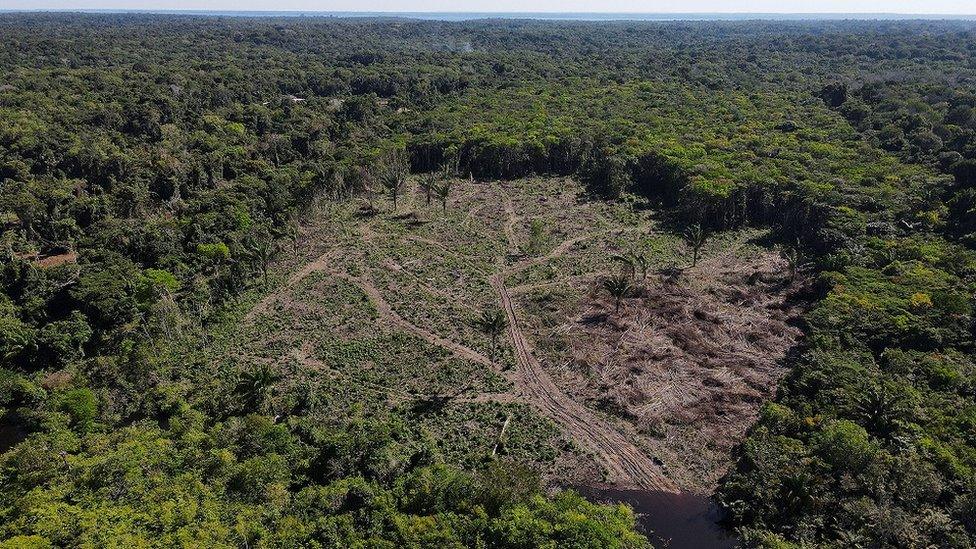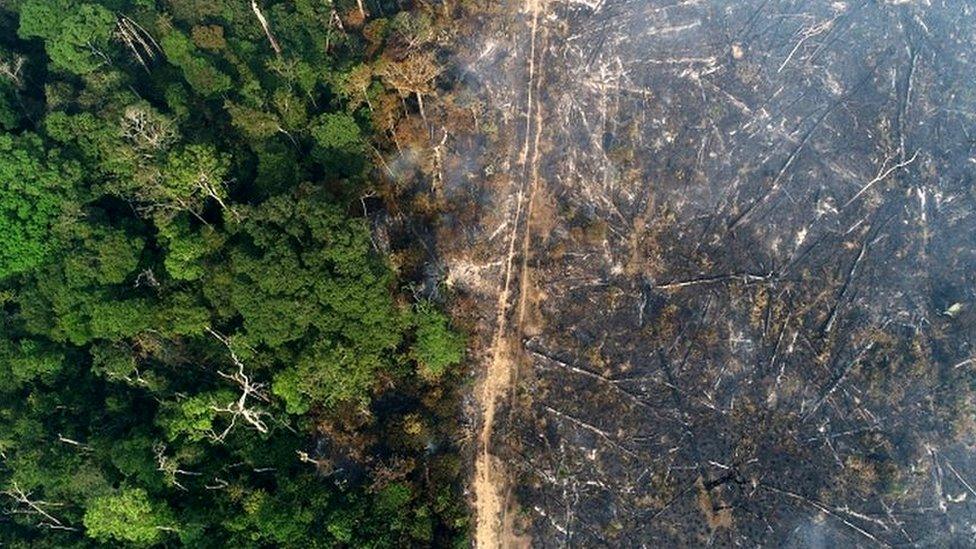Amazon Rainforest: Highest deforestation rate in six years
- Published

Deforestation of the Amazon rainforest in Brazil has hit a six-year high, the national space agency, Inpe, reports.
Some 3,988 square kilometres (1,540 square miles) of land were cleared in the region between January and June.
Last year, 3,088 square kilometres of the rainforest were destroyed during the same period.
The Amazon plays an essential role in the planet's oxygen and carbon dioxide cycles, absorbing vast amounts of greenhouse gases from the atmosphere.
Environmentalists blame the increasing levels of deforestation on Brazil's right-wing president, Jair Bolsonaro, who has rolled back environmental protections.
Brazil's environment ministry said it had been forceful in fighting environmental crimes, although in a statement it failed to mention the spike in deforestation.
The Amazon is the world's largest rainforest, but its trees are felled for their wood and to clear space for crops that in turn supply global food companies.
The high level of deforestation is also feeding a higher than usual number of fires for this time of year, Dr Manoela Machado from the University of Oxford told Reuters news agency.
After trees are cut down, fires are often set in order to clear the land for agriculture, so more deforestation means more fires, Dr Machado said.
As well as being rich in biodiversity, the area is home to communities who say they need to use the forest for mining and commercial farming in order to make a living.
At the same time, indigenous communities living in the Amazon fight to protect the rainforest and their ways of life.
In March, researchers concluded from over three decades worth of satellite data that the health of the Amazon rainforest is deteriorating.
They said there were signs of a loss of resilience in more than 75% of the forest, with trees taking longer to recover from the effects of droughts largely driven by climate change, as well as human impacts such as deforestation and fires.
At the COP26 climate change summit in Glasgow last year, more than 100 governments promised to stop and reverse deforestation by 2030.
A logger, an environmental policeman, a cattle rancher and an environmentalist share their views on the Amazon's future
- Published11 February 2022

- Published1 November 2021

- Published24 June 2022
